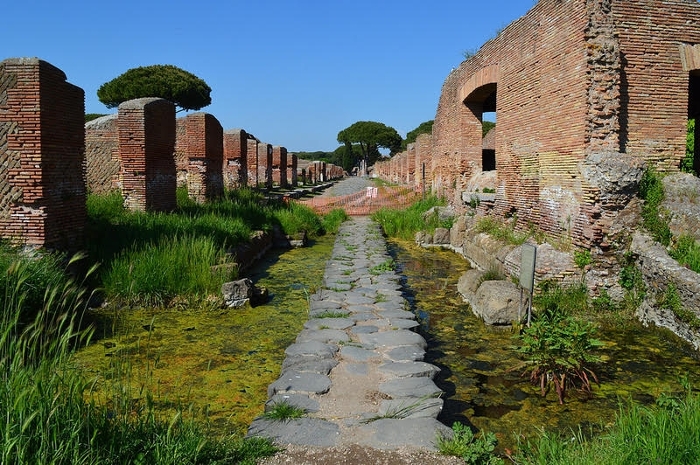Research project
Liquid Footprints
Water, Urbanism, and Sustainability in Roman Ostia
- Duration
- 2013 - 2017
- Partners
KNIR (Koninklijk Nederlands Instituut Rome)
This research focuses on the archaeological remains of the water system of Roman Ostia, and applies modern water accounting and sustainability models (Water Footprints, Urban Metabolism) to investigate the interaction between water demand and system complexity.
Short Abstract
How can we incorporate contemporary advances in resource awareness to more fully understand patters of ancient Roman urban water use?

Project Description
Mark’s research analyzes the development of water technology and water usage patterns in Roman urban frameworks. This research focuses on the material evidence from Roman Ostia and investigates cases of water sharing and re-use between structures of different functions (public, domestic, industrial). As the harbor city of Rome, Ostia developed into a thriving economic, cultural, and religious city with a highly diverse urban profile.
This study incorporates methods utilized in contemporary urban planning and sustainable engineering together with Roman urban studies to create Water Footprints, or representative snapshots of water acquisition, usage, and disposal. Through GIS modeling of urban hydraulic features, this systematic and holistic approach to urban water systems will provide a comprehensive look at the functional productivity (or inefficiencies) of Roman water technology. Despite the challenges involved with mediating issues of “urbanism”, “sustainability”, and “efficiency”, this study strives toward a trans-disciplinary approach to investigate the equally destructive and life-giving nature of human relationships with water.
Preliminary conclusions testify to the dynamic interaction between Roman technology, the local landscape, and changing cultural attitudes to water usage in shaping the urban landscape. An initial case-study of a city block (insula IV.ii) has been completed, and several more are underway to provide a diverse data set to create waterfootprints for Ostia. This research strives to create a template which can be used to compare Roman cities to each other in terms of water usage.
Given the diversity of research topics and specializations, Leiden is the ideal place for such a study. The supervisors of this research, Dr. H. Stöger, Dr. P. Akkermans provide an excellent framework for this study.
